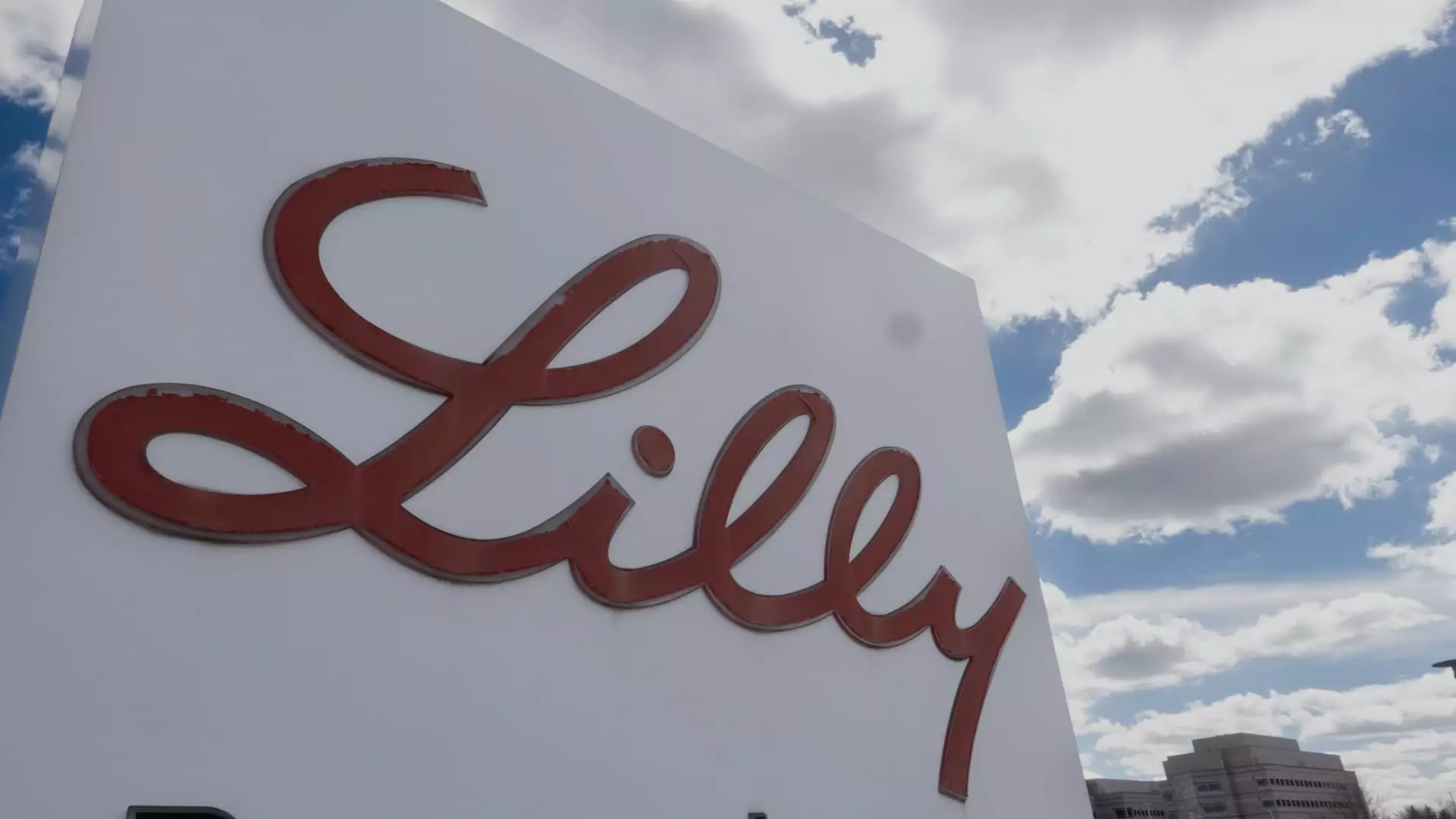On Wednesday, Eli Lilly unveiled a remarkable plan to invest a staggering $27 billion in establishing four new manufacturing facilities throughout the United States. This decision is a direct response to increasing consumer demand for their highly successful diabetes and weight loss injectable medications. Notably, as the pharmaceutical industry shifts focus toward reshoring production capabilities, Eli Lilly’s announcement underscores the intersection of healthcare logistics with broader economic and political strategies. This investment aligns with a growing trend among manufacturers aiming to bolster domestic production in an era marked by global supply chain vulnerabilities.
The $27 billion commitment marks a significant addition to Eli Lilly’s existing investments, pushing their total manufacturing investments in the U.S. over the past few years to beyond the $50 billion mark. Prior to this, the company had already allocated approximately $23 billion towards the expansion of various plants and facilities since 2020—efforts that have been instrumental in alleviating shortages for some of its most sought-after products. By laying the groundwork for future growth, Eli Lilly is commendably preparing to meet the ubiquitous demand for its pharmaceutical solutions while simultaneously enhancing domestic employment opportunities.
Among the four new manufacturing sites, three will focus on producing active ingredients crucial for medications, such as tirzepatide, the active component of both Eli Lilly’s obesity treatment Zepbound and its diabetes remedy Mounjaro. The fourth facility will serve as a pivotal extension of the company’s global network aimed at producing injectable therapies, emphasizing both innovation and expansion.
Beyond merely addressing the immediate needs of Zepbound and Mounjaro, Eli Lilly is proactively exploring opportunities across various therapeutic domains, including oncology, heart health, and neuroscience. CEO David Ricks emphasized the company’s optimism surrounding its product pipeline, asserting that this foresight is a driving force behind their extensive commitment to domestic manufacturing growth. This multifaceted approach reflects Eli Lilly’s dedication to not only maximizing profits in a lucrative market but also ensuring diverse therapeutic options for patients.
The growing prevalence of GLP-1 drugs, particularly due to the success of Zepbound and Mounjaro competing against Novo Nordisk’s Wegovy and Ozempic, signals a rapidly evolving healthcare landscape. Analysts predict the global market for obesity treatments will eclipse an impressive $150 billion by the early 2030s, making it imperative for companies like Eli Lilly to consolidate their market presence. The industry is at a crucial juncture, with several competitors eager to establish their foothold; thus, Eli Lilly’s proactive measures are not only timely but essential for maintaining a competitive edge.
Ricks articulated the company’s commitment to advancing healthcare accessibility, stressing that the new investments are geared towards ensuring patients can obtain FDA-approved medications rather than resorting to less trustworthy and potentially harmful compounded alternatives, especially in times of limited supply. The FDA has recently determined that tirzepatide shortages are resolved, locking out many compound pharmacies from producing unregulated versions of these popular medications.
Eli Lilly’s ambitious investment initiative promises significant employment opportunities, projecting the creation of over 3,000 well-paying jobs for engineers and scientists along with 10,000 construction positions required for facility development. This commitment to job creation serves not only the pharmaceutical industry but also stimulates local economies across the regions where these plants will be located, such as North Carolina, Indiana, and Wisconsin.
Furthermore, Ricks has praised the impact of the Tax Cuts and Jobs Act enacted in 2017 under President Trump, describing it as a driving force behind Eli Lilly’s growth strategy. This legislation, which significantly reduced the corporate tax rate and revamped numerous tax regulations, has been deemed essential by the company to continue bolstering extensive manufacturing investments. The looming expiration of certain provisions at the end of December raises concerns as companies prepare for potential shifts in the tax landscape that could impact future investments.
Eli Lilly’s commitment to manufacturing expansion is mirrored by competitors such as Novo Nordisk, which has similarly invested billions in ramping up production for its medications. As both companies navigate the competitive landscape, the race to capture market share in the pharmaceutical sector highlights the critical need for innovation, efficient production, and consumer accessibility.
Eli Lilly’s substantial investment in U.S. manufacturing not only promises to fortify its position within the burgeoning market for diabetes and obesity treatments but also reflects a broader commitment to revitalizing domestic production. As the health and demand for innovative treatments continue to surge, the company’s strategic investments represent an essential move toward ensuring the availability of safe, effective, and affordable medications for patients nationwide. Through this multifaceted strategy, Eli Lilly demonstrates a proactive commitment to the American economy and healthcare system alike, setting a significant precedent for others in the industry.

